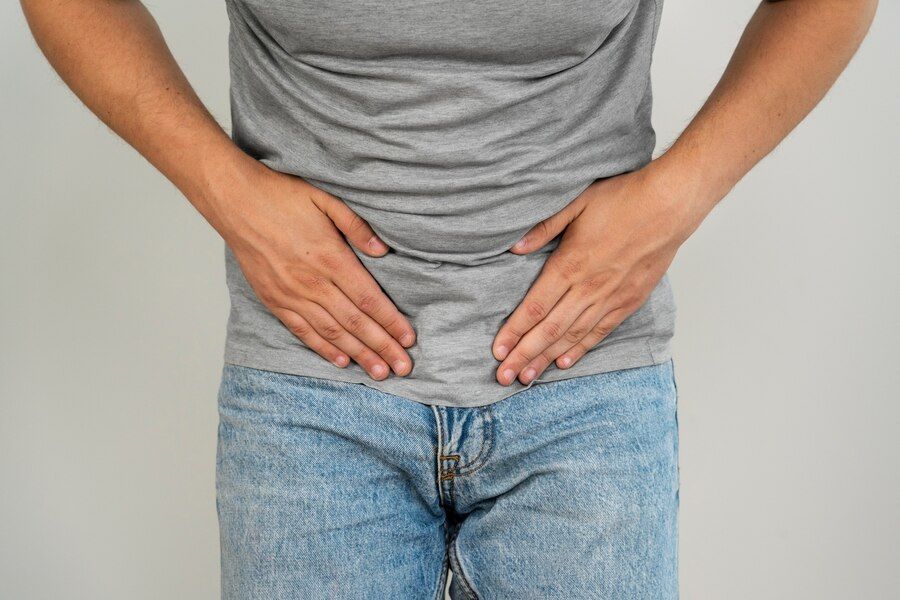Chronic groin pain can be a debilitating condition that affects individuals of all ages and backgrounds. It can result from a variety of underlying causes, such as muscle strains, hernias, hip joint problems or overuse injuries.
Regardless of the cause, living with chronic groin pain can significantly impact one’s quality of life. However, there are effective strategies and treatments that can help manage and alleviate this persistent discomfort.
Understanding the Causes
Before diving into management strategies its crucial to understand the potential causes of chronic groin pain. Common causes include:
- Muscle Strains: Overuse or sudden movements can strain the muscles in the groin area, leading to chronic pain.
- Hernias: Inguinal or femoral hernias can cause chronic groin pain, often requiring surgical intervention for long-term relief.
- Hip Joint Issues: Hip conditions like hip impingement or osteoarthritis can refer pain to the groin area, leading to chronic discomfort.
- Overuse Injuries: Athletes and active individuals are prone to overuse injuries in the groin area, such as sports hernias or tendinopathies.
- Nerve Compression: Conditions like meralgia paresthetica or pudendal neuralgia can result in chronic nerve-related groin pain.
Now that you have an idea of the potential causes lets delve into effective management strategies:
-
Consult a Healthcare Professional
The first step in managing chronic groin pain is to consult a healthcare professional such as a primary care physician, orthopedic specialist or physiotherapist. They can perform a thorough examination order necessary diagnostic tests like X-rays or MRI scans and provide an accurate diagnosis. Consider visiting a physical therapy for groin pain for effective treatment they can help alleviate discomfort and improve your mobility.
-
Tailored Treatment Plan
Once diagnosed, your healthcare provider will create a personalized treatment plan based on the underlying cause of your groin pain. Treatment options may include physical therapy, medications, or, in some cases, surgery. Adhering to this plan is crucial for effective pain management.
-
Physical Therapy and Rehabilitation
Physical therapy plays a significant role in managing chronic groin pain. A skilled physical therapist can design a program that includes stretching, strengthening exercises, and manual therapy techniques to improve flexibility and reduce pain. These exercises can help correct muscle imbalances and improve overall function.
-
Pain Medications
Depending on the severity of your groin pain, your healthcare provider may prescribe pain medications like nonsteroidal anti-inflammatory drugs (NSAIDs) or muscle relaxants. These can help alleviate pain and inflammation, making it easier to engage in rehabilitation exercises.
-
Lifestyle Modifications
Making certain lifestyle changes can also contribute to effective pain management. Avoid activities that exacerbate your pain, and consider incorporating low-impact exercises like swimming or cycling into your routine. Maintaining a healthy weight can reduce stress on the groin area, while proper posture and ergonomics can alleviate discomfort during everyday activities.
-
RICE Protocol
For acute exacerbations of groin pain, the RICE protocol (Rest, Ice, Compression, Elevation) can be beneficial. Resting the affected area, applying ice to reduce inflammation, using compression bandages, and elevating the leg can provide temporary relief and facilitate healing.
-
Surgical Intervention
In cases where conservative treatments are ineffective, surgical intervention may be necessary. Procedures such as hernia repair or hip surgery can address the root cause of the pain. Discuss the potential benefits and risks of surgery with your healthcare provider to make an informed decision.
-
Pain Management Techniques
Explore complementary therapies and pain management techniques such as acupuncture, chiropractic care, or mindfulness meditation. These approaches can help you better cope with chronic pain and improve your overall well-being.
-
Psychological Support
Chronic pain often takes a toll on mental health. Consider seeking support from a therapist or support group to help manage the emotional aspects of living with chronic pain. Mindfulness-based stress reduction and cognitive-behavioral therapy (CBT) can be particularly beneficial.
-
Patience and Persistence
Managing chronic groin pain is often a journey that requires patience and persistence. It may take time to find the right combination of treatments that work for you. Stay engaged with your healthcare provider, adjust your treatment plan as needed, and don’t lose hope.



